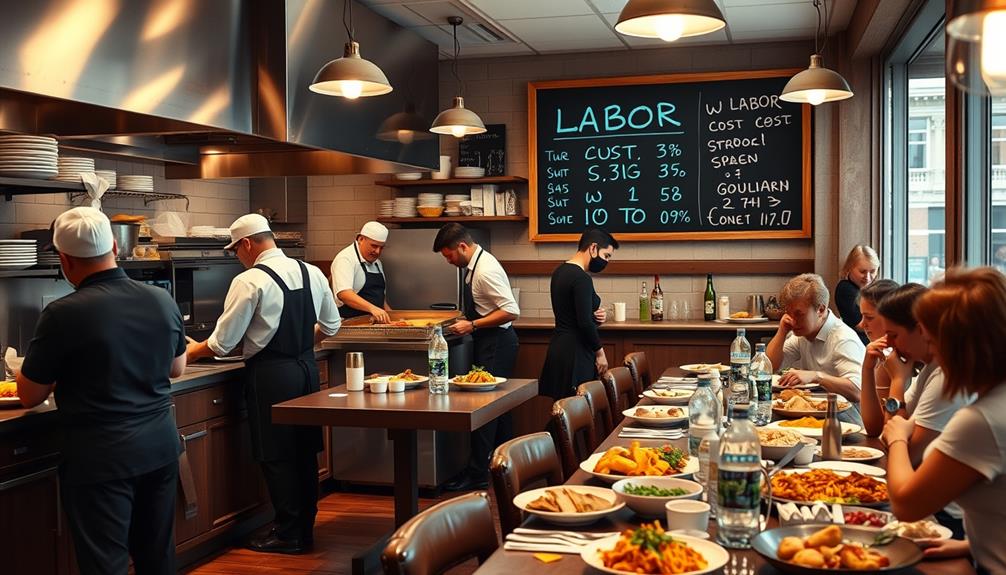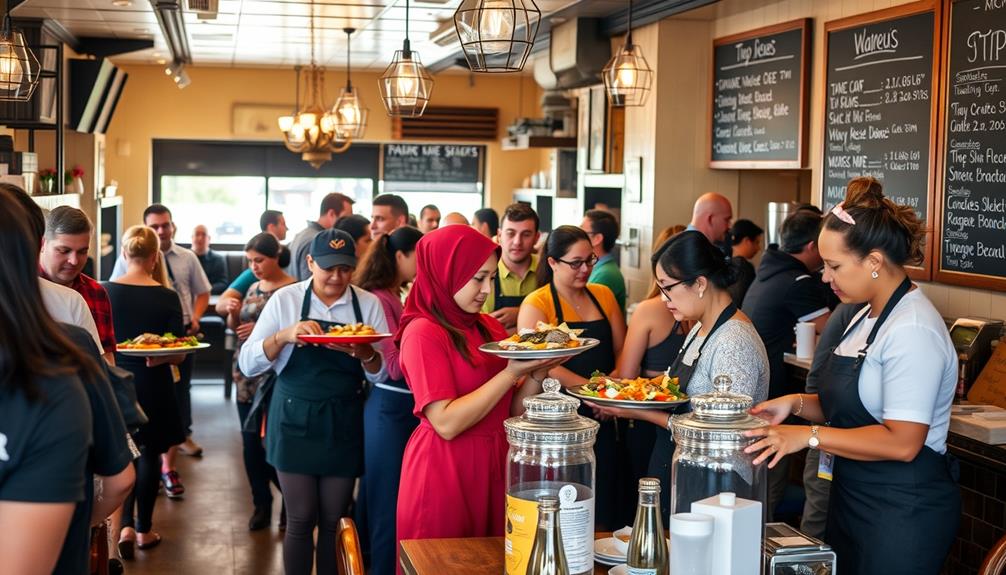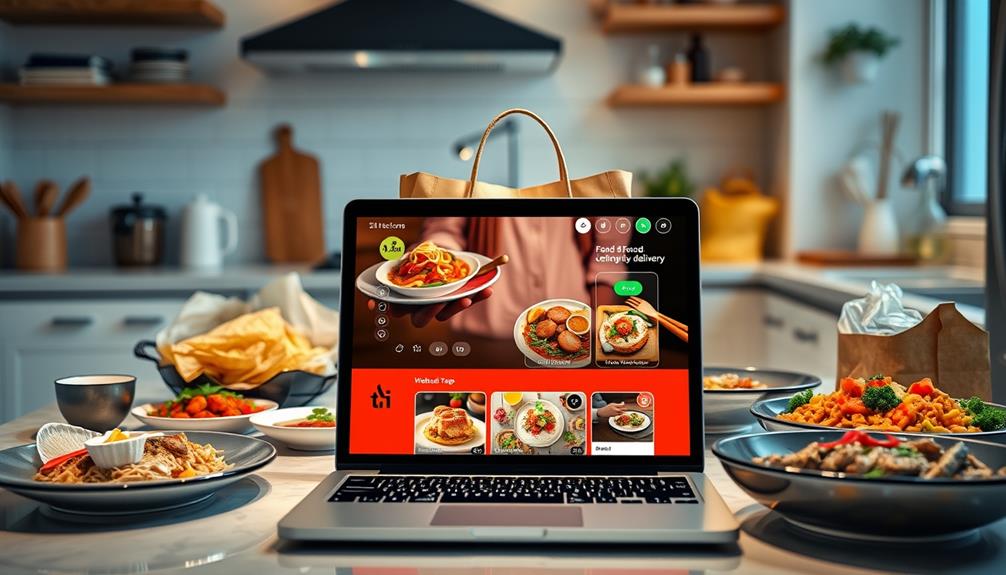You should aim to keep labor costs in your restaurant below 30% of total revenue. For quick-service establishments, targeting around 25% is ideal, while fine dining can see costs climb to 30-40%. Maintaining labor costs below 30% is essential for profitability and sustainability. Regularly monitoring these costs helps you spot inefficiencies and optimize your staffing levels. Factors like restaurant type, location, and menu complexity can influence your labor expenses. Staying informed about effective management strategies can further reduce costs. If you want to discover more about optimizing your restaurant's labor expenses, keep exploring.
Key Takeaways
- Ideal labor costs for restaurants should generally be below 30% of total revenue to ensure financial sustainability.
- Quick-service restaurants typically target labor costs between 25-30% for optimal efficiency.
- Casual dining establishments also aim to keep labor costs within the 25-30% range.
- Fine dining restaurants often experience higher labor costs, averaging between 30-35%.
- The average labor cost percentage across the restaurant industry is approximately 31.6%.
Understanding Labor Costs in Restaurants
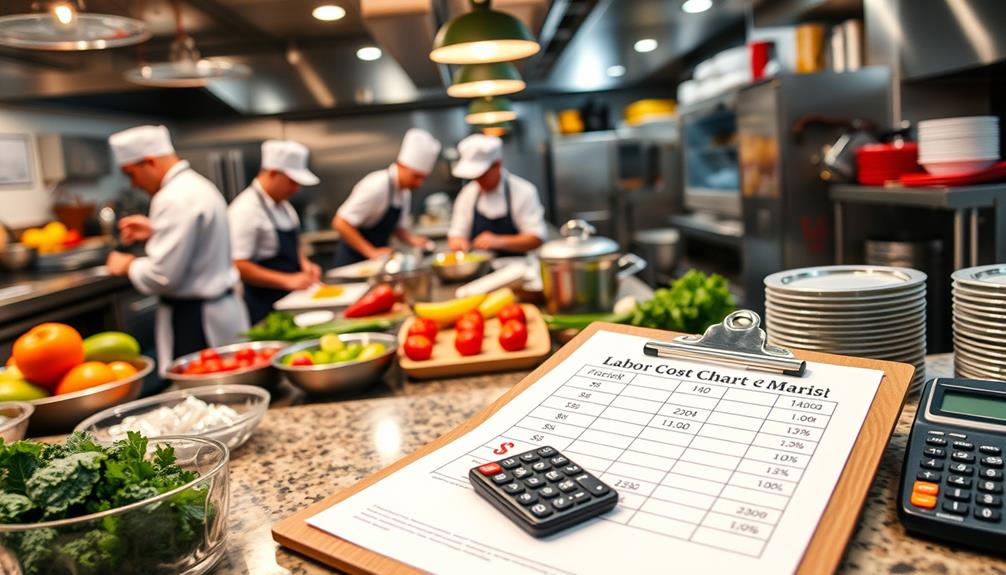
Have you ever wondered how labor costs impact a restaurant's bottom line? In the restaurant industry, labor costs typically account for 20-35% of total sales. Quick-service restaurants often aim for around 25%, while fine dining establishments can see costs climb to 30-40%.
Understanding these labor cost percentages is essential for maintaining financial sustainability. Effective budget management can help restaurant owners allocate resources wisely, guaranteeing labor expenses remain within the preferred range.
The preferred labor cost percentage for most restaurants is below 30%. If you exceed this threshold, it may signal potential financial difficulties that require immediate attention. Regular monitoring of labor costs as a percentage of sales helps you identify operational inefficiencies and guarantee you're meeting industry benchmarks.
High labor cost percentages can lead to underperformance, necessitating adjustments in your staffing levels, scheduling, or overall operational strategies.
Ideal Labor Cost Percentages
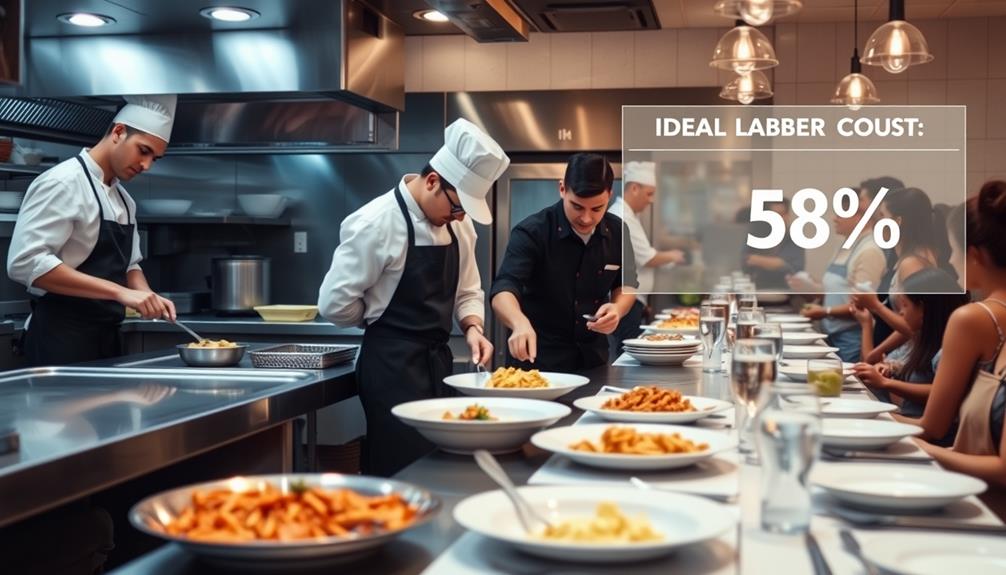
Understanding ideal labor cost percentages is vital for effective restaurant management. Ideally, labor costs should be below 30% of your total revenue. This means that for every $10 in sales, you shouldn't allocate more than $3 to labor costs. One of the best ways to control labor costs and ensure they stay below the ideal percentage is by regularly reviewing and analyzing your restaurant’s financial statements. Keeping track of labor costs in relation to total revenue will allow you to make necessary adjustments to staffing levels and schedules. Additionally, it’s essential to factor in restaurant tax calculation into your overall financial planning to accurately account for all expenses and liabilities.
In the restaurant industry, quick service restaurants often target labor costs between 25% and 30%, while casual dining establishments aim for similar percentages based on their menu complexity and service style.
Fine dining restaurants, however, typically experience higher labor costs, ranging from 30% to 35%. This increase is due to more intricate service requirements and higher staffing levels. The average labor cost percentage across the industry stands at approximately 31.6%, serving as a benchmark for evaluating your financial performance.
Maintaining labor costs within these ideal ranges is necessary for achieving a sustainable prime cost, ideally at or below 60% of total sales. This includes both labor costs and the cost of goods sold (CoGS).
As a restaurant operator, keeping an eye on these percentages guarantees your business remains profitable while delivering quality service.
Factors Influencing Labor Costs

Managing labor costs effectively requires recognizing the various factors that influence them in a restaurant setting. Your restaurant's type plays a significant role; quick service typically aims for labor costs around 25%, while fine dining may see percentages between 30-35%.
Additionally, understanding how to protect seniors from financial scams can also relate to managing costs in a restaurant by ensuring that resources are allocated wisely and that staff are trained to recognize potential risks.
Location impacts these costs too, especially in areas with higher minimum wage laws, which can lead to higher labor cost percentages.
Operational efficiency is essential; a well-run establishment can optimize staff size and reduce unnecessary labor costs. Menu complexity also matters. A complicated menu often requires more skilled staff, increasing labor expenses.
Seasonal variations and special events can change your labor needs, making effective forecasting essential to control staffing levels.
Employee turnover is another vital factor. With turnover rates averaging around 79.7% in the industry, high turnover can escalate labor costs due to ongoing hiring and training expenses.
As a restaurant manager, you must track and adjust labor costs to comply with varying minimum wage regulations across states and localities. By understanding these factors, you can better manage your labor costs and maintain a healthy percentage of sales.
Strategies to Manage Labor Costs
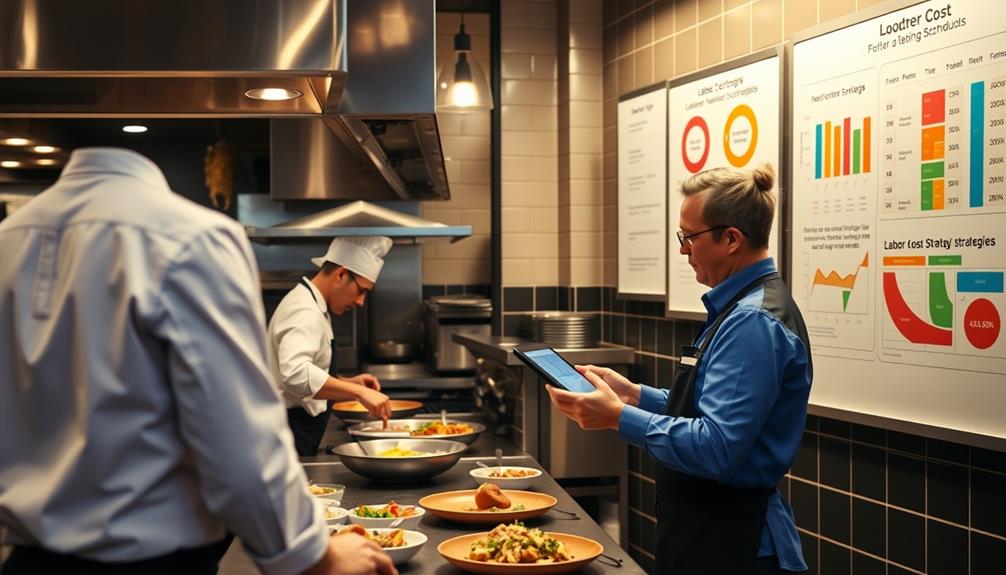
Effective strategies to manage labor costs are essential for maintaining a profitable restaurant. Start by regularly reviewing labor reports to identify overstaffed shifts, which helps you optimize scheduling.
Top platforms include freelance sites for finding temporary staff during busy seasons. Aim to keep your labor costs within the ideal range of 28-33% of total revenue. Implement demand forecasting based on holidays and local events to adjust staffing levels and reduce unnecessary labor costs during slower periods.
Utilize employee scheduling software that integrates with your POS systems. This streamlines labor management and guarantees compliance with labor regulations, preventing both overstaffing and understaffing.
Additionally, invest in cross-training employees to handle multiple roles. This flexibility allows your staff to cover various shifts as needed, reducing the impact of turnover on labor costs.
Tools for Optimizing Labor Expenses

Tools designed for optimizing labor expenses can transform your restaurant's operational efficiency. By utilizing employee scheduling software, you can forecast demand and align staff hours with peak business periods, avoiding both overstaffing and understaffing. This helps lower your labor costs and keeps your restaurant labor cost percentage in check.
Furthermore, incorporating energy-efficient appliances can help reduce operational costs in the long run, as they often consume less power and contribute to overall savings energy-efficient appliances.
Integrated POS systems are another key asset, providing real-time data that allows you to track labor costs accurately. With this information, you can make informed decisions on staffing adjustments to maintain efficiency.
In addition, implementing a Restaurant Labor Cost Calculator helps you calculate labor costs as a percentage of sales, aiding in better financial planning and resource allocation.
Cross-training employees is a smart strategy to foster flexibility within your team. This practice allows you to efficiently cover busy times without greatly increasing labor costs.
Moreover, leveraging technology, such as QR code ordering and mobile point-of-sale systems, can further boost efficiency. By optimizing labor expenses through these tools, you not only enhance service quality but also maintain customer satisfaction while effectively reducing labor costs.
Frequently Asked Questions
What Is the Ideal Labor Cost Percentage?
When determining the ideal labor cost percentage, consider balancing efficiency and quality. You'll want to keep it around 28-33% for profitability, ensuring your staff is well-compensated while maintaining a healthy bottom line.
What Is the Best Labor Cost for a Restaurant?
To find the best labor cost for your restaurant, aim for efficiency. Monitor your expenses closely, utilize scheduling tools, and adjust staff roles to maintain quality service while keeping costs within a sustainable range.
What Is a Reasonable Cost for Labor?
A reasonable cost for labor balances your budget and service quality. Aim for efficiency, monitor expenses, and adjust staffing levels. By keeping labor costs in check, you'll enhance profitability and maintain customer satisfaction.
How Do You Calculate Restaurant Labor Percentage?
To calculate your restaurant labor percentage, divide your total labor costs by total sales, then multiply by 100. Make sure to analyze this regularly for better financial management and staffing decisions.
Conclusion
Ultimately, knowing your labor costs is key to running a successful restaurant. Aiming for that ideal percentage isn't just a goal; it's a pathway to profitability. Remember, every hour counts, and every dollar saved adds up. So, as you refine your strategies and utilize tools to optimize expenses, you're not just managing costs—you're crafting a thriving business. With the right focus, you can turn labor into an asset rather than a burden, making success your reality.
